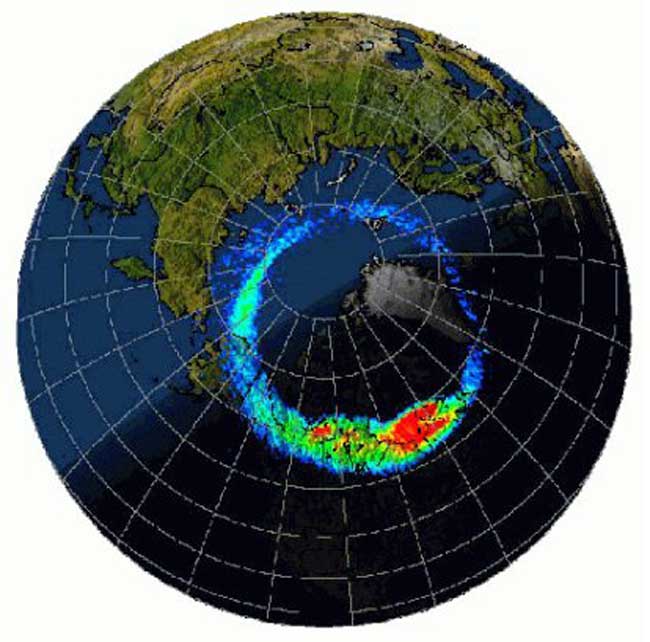Choreographer of Northern Lights Revealed

The gracefully flitting symphony of lights that color polarskies have their very own high-energy choreographer.
Astronomers have long puzzled over the invisible forces at workthat give rise to the auroras, or NorthernLights (at the South Pole they're called Southern Lights). New measurementsfrom a group of satellites reveal that conditions at boundaries between layersof electrified particles control the lights.
- Video - Aurora: Dangerous Beauty
While the finding does expose some of the magic veiled by the sky lights,it has also added another layer of mystery, according to the scientists.
"As always the more we learn about it the more questionsare raised," said lead researcher G?ran Marklund from the AlfvenLaboratory, at the Royal Institute of Technology in Stockholm.
"So in a way one can say it's a never-ending storybecause you figure something out and then you realize that nature is even morecomplicated than you could ever guess," Marklund told SPACE.com.
Light show
Researchers knew that relatively static electric fields, whichhover parallel to Earth'smagnetic fields, play an important role in the acceleration of electrons thatcauses aurorasto shine.
Get the Space.com Newsletter
Breaking space news, the latest updates on rocket launches, skywatching events and more!
Inside these electric fields are invisible structuresrepresenting electric potentials. When charged particles streaming throughspace hit upon the structures, they get accelerated in opposite directions. Ina celestial crash course, the charged particles ram into the ionosphere,a region in the upper atmosphere, where they transfer energy to the ionosphericmolecules of oxygen and nitrogen. The result: glowingarcs and swirls.
The electric potential structures come in two flavors:symmetric U-shaped and asymmetric S-shaped. In 2004, Marklund discovered theU-shaped circuits form at a plasma boundary between a region within the magnetotailat equatorial latitudes and one at higher latitudes. The S-shapes occur at theboundary between the plasma sheet (at the inner edge of the auroral oval) andthe polar cap.
Close contact
A group of fourspacecraft, part of the European Space Agency's Clustermission, orbiting in a triangular pyramid formation provided abehind-the-scenes look at an aurora's choreographer.
In the recent study, one of the spacecraft crossed the auroralarc at high altitude in the Earth's magnetotail. As expected, it detectedthe U-shaped structure when crossing the boundary within the plasma sheet. Just16 minutes later another Cluster spacecraft crossed the same boundary andrevealed an asymmetric S-shaped structure, which was a surprise since theS-shape was thought to arise at the polar cap boundary.
Within that 16-minute period, the plasma density and associatedelectric currents plummeted at the plasma boundary. So the boundary ended upresembling the steep drop-off in particle density between the aurora edge andthe polar cap.
So the shape morphing--concurrent with plasma and electricfield conditions--strengthen Marklund's theory. "These resultsnicely demonstrate that the way the potential structure looks really reflectsthe plasma conditions and the electric current system," Marklund said.
He added, "We don't know yet how long [thepotential structures] last or how they are distributed in terms of altitude."
The results are detailed in the Jan. 13 issue of the Journal of Geophysical Research.
- Top 10: The Wildest Weather in the Galaxy
- Satellite to Study Auroras Ready to Launch
- Images: Aurora Season 2005
- What is the Aurora?
Join our Space Forums to keep talking space on the latest missions, night sky and more! And if you have a news tip, correction or comment, let us know at: community@space.com.










